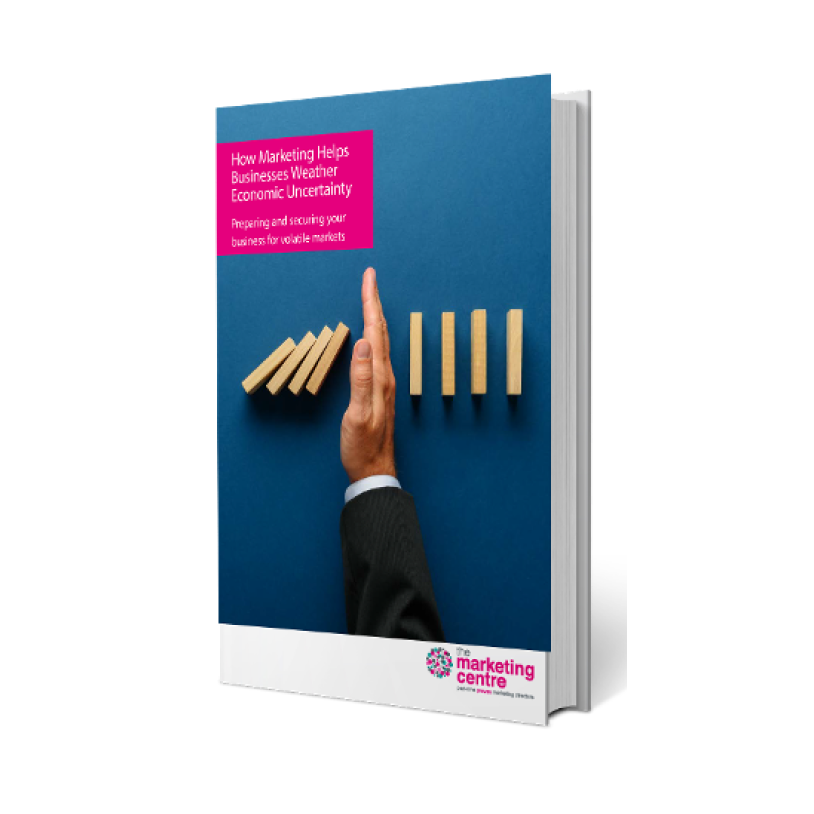Why businesses overlook brand-building
Most business owners focus on lead generation because it’s tangible, trackable, and offers the promise of quick returns. But prioritising short-term pipeline often leads to disappointing long-term growth.
Without a strong brand and clear value proposition, lead generation can end up bringing in the wrong kind of enquiries—low-quality leads that don’t convert, waste time and clog up the sales pipeline.
“One business I worked with had a healthy pipeline, but it wasn’t moving,” Chris recalls. “They were getting leads, but they couldn’t convert them. And when we dug into it, the reason was simple: potential customers couldn’t see the value in choosing them over the competition.”
Pete agrees. “Across the thousands of businesses that have completed our Marketing 360 survey, the number one challenge business owners report is lead generation,” he explains. “But when we actually start working with them, nine times out of ten, the real issue is brand and value proposition. They haven’t clearly defined who they are, why customers should choose them, or what makes them different. That’s why their lead generation doesn’t work.”
Brand building may seem abstract and difficult to measure, but when done right, it’s one of the most valuable assets your business can have.
What happens when you get brand right?
Many people think of ‘brand’ as just awareness. A better way to think about it is trust.
When your brand is strong, your marketing doesn’t have to work as hard to convince people to buy. Customers approach you instead of you chasing them. And your sales team spends less time overcoming objections and more time closing and improving sales conversion rates.
Chris saw this first-hand with a construction materials manufacturing business that specialised in high-end manufacturing. “The business had been trading for decades. They were masters of their craft, creating layers of extra value for their customers that wasn't visible in marketing communication. As soon as the layers of value became visible in the form of a unique and branded value proposition, leads and sales took off.”
Another manufacturing business he worked with faced a similar issue. “Their pipeline was completely stuck,” Chris explains. “They had £3 million in deals sitting there, not moving. We developed a clearer value proposition that made the layers of value more visible and tangible. Within days of it going live, the sales team were able to convert a significant amount of the opportunities stuck in the pipeline.”
These businesses didn’t need more leads. They needed a stronger brand—one that made it clear why customers should choose them over others.
How to balance brand and lead gen
- Understand your brand’s current contribution to sales
“Look at where your deals are coming from,” Pete advises. “If most of your opportunities come from outbound or direct tactics like cold outreach or PPC, that’s a sign your brand isn’t doing enough heavy lifting. Inbound enquiries are a good indicator of a strong brand.” - Clarify your value proposition
Before you invest in more lead generation, make sure your messaging is clear. Chris says this step is often overlooked: “A lot of businesses think they know why customers choose them, but when you press them, they don’t have a simple, compelling answer. If you can’t articulate your value in a sentence or two, neither can your customers.” - Integrate your brand into lead gen activities
It’s not about choosing between brand and lead gen—it’s about making sure they work together. “The most successful businesses don’t think of these as separate things,” Chris explains. “Your lead generation should reinforce your brand. Every ad, every email, every touchpoint should reaffirm your value proposition and brand identity.” - Stay consistent
Brand-building is a long-term project. The world’s best brands are the result of decades of consistent effort. If you change up your message and brand identity every few years–or let your brand ‘drift’ over time into something else–you’re undoing the hard work you’ve already put in. Try to stick to a clear set of messaging, delivered consistently across all your customer touchpoints for years at a time to drive sustainable long-term business growth.
The misconception: brand takes too long to deliver results
Many business owners hesitate to invest in brand because they assume it’s a long-term play—something that will take months or even years to work. They associate it with expensive workshops, rebrands, and lengthy strategic exercises.
But the reality is very different.
“You don’t have to disappear for six months to figure out your brand before you start marketing,” Pete explains. “This isn’t about pausing everything while you wait for a ‘big reveal.’ It’s about refining your messaging as you go, making incremental improvements that immediately make your lead generation more effective.”
In fact, a brand that’s actively used and refined in the real world will get stronger, faster. Chris recalls working with a business that initially wanted to focus purely on lead generation. “They thought investing in brand would slow them down. But the moment we sharpened their messaging and made their value clearer, their conversion rates improved.”
This is because brand isn’t just about perception—it’s about clarity. When potential customers understand who you are, what you stand for, and why you’re different, they move through the buying process faster, which improves sales conversion rates.
Pete has seen this firsthand with The Marketing Centre’s own marketing. “Our fastest-closing leads are always referrals. The second fastest? Inbound leads from people who already know and trust our brand. If you want a pipeline that moves faster, brand isn’t a delay—it’s a shortcut.”
Ready to build a stronger brand?
For businesses that get this right, the impact is clear: better leads, faster conversions, and long-term business growth that doesn’t rely on constantly ‘feeding the machine’ with short-term tactics.
If you’re ready to define your brand and integrate it into a lead generation strategy that delivers sustainable results, our fractional CMOs can help.



